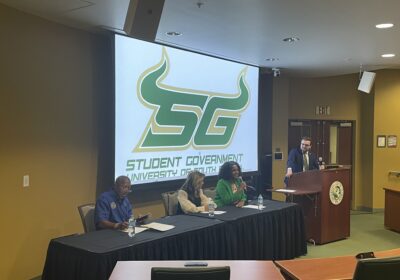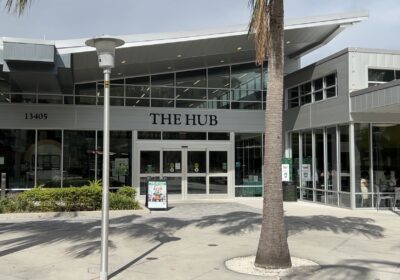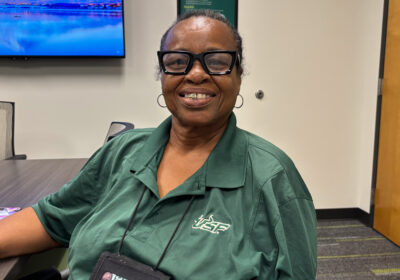The division of Black Lives Matter

Alicia Garza, co-founder of Black Lives Matter, will be speaking Tuesday evening at 8 in the Oval Theater. SPECIAL TO THE ORACLE
A polarizing movement since its inception, Black Lives Matter (BLM), which has been showcased at multiple protests and demonstrations throughout the nation over the past five years, has opened the door to discussions on systemic racism.
Alicia Garza, a co-creator of BLM is speaking tonight at the Marshall Student Center Ballroom at 8 as part of USF’s MLK Commemorative Week. The lecture will discuss race relations in America and how the movement became a part of national conversation.
Garza, the social activist who coined the phrase, helped spur the movement that took the nation by storm following the death of 17-year-old Trayvon Martin.
“The sad part is, there’s a section of America who is cheering and celebrating right now,” wrote Garza on Facebook. “And that makes me sick to my stomach. We gotta get it together y’all… Btw stop saying we are not surprised. That’s a damn shame in itself.
“I continue to be surprised at how little black lives matter. And I will continue that. Stop giving up on black life. Black people. I love you. I love us. Our lives matter.”
From those words penned in a moment of anger and mourning, a movement was born.
BLM is a cry for change intended to ensure black lives were no longer “systematically and intentionally targeted for demise,” according to the movement’s website. On paper, the idea seems like a stance everyone would support, however the physical embodiment of the issue has split the nation in two.
According to the Pew Research Center, 40 to 45 percent of Americans are in favor of BLM with 20 to 25 percent in opposition and approximately 30 percent saying they didn’t know enough about the issue to offer an opinion.
Erik Withers, a professor of sociology at USF, believes part of the division lies in the misconceptions regarding the movement.
“(BLM) is about affirming the accomplishments of black Americans throughout history,” Withers said. “There’s gender components to BLM and it’s about respecting differences, empathy, all of these things, those messages don’t get out in the media.
“It gets cut off right at aggressiveness and police violence and then the rest of the narratives don’t get heard. I think honestly if those narratives got out a little bit better, more people would be more accepting of it.”
Garza and her fellow founders echo the belief that the movement is complex and empathetic in their 13 guiding principles. According to the guidelines of BLM, inclusivity lies at the core of the movement.
“To love and desire freedom and justice for ourselves is a necessary prerequisite for wanting the same for others,” write the founders.
Yet Garza herself has faced heavy opposition when speaking about the issue. In February of 2016, she was scheduled to speak at Webster University in St. Louis, sparking uproar on social media and causing her to cancel the lecture. Garza said she made the decision after receiving threats and online attacks toward not only herself, but also the organization as a whole.
Withers said social media has heavily impacted the way our community as a whole responds to issues like BLM.
Unlike in prior generations, people are no longer able to “escape” controversial issues or other people’s opinions on those issues. They are constantly bombarded with thoughts, opinions and a feed of updates on whatever the topic may be, and many of the people they love will voice opinions online that may contradict their own, causing lines to be drawn.
America’s political leaders also play a strong role in the division, according to Withers. The current political climate is saturated in “doomsday” paranoia and elected officials feed that fear to the masses.
“(The message is) there’s no hope, the future is doomed unless we make boundaries right now, make sides,” Withers said. “There’s us and there’s them and that’s it… There lacks leadership that is trying to spread a message of bridging gaps. There lacks leadership on the highest levels that is trying to be empathetic and bridge gaps between groups.
“We’re in a time right now where leadership is explicitly trying to create gaps and that’s what we’re seeing then play out in the media and then on social media and things like that.”
With division, comes closed-mindedness. The social media marketing firm Rantic polled 10,000 Facebook users and found that 94 percent of Republicans, 92 percent of Democrats, and 85 percent of Independents said they’d never altered or reversed their view of an issue or stance based on a Facebook post.
Regardless of the validity of the information, in most cases social media has been proven to have little influence in changing stances. However, it is successful in spreading an issue worldwide, as seen in BLM. Facebook took what was simply a comment on a single incident and created a national conversation. That conversation has caused many to analyze the American justice system and if systemic racism is truly permeating our society.
Now, the conversation is being brought to USF.
“The ULS student organizers chose Garza with the expectation that she will engage the audience in a timely discussion about race relations in America and how her organization’s activism became the national movement it is today, galvanizing individuals to stand up together against violence, police brutality and social injustice,” Marion Huntley, Coordinator for the Center for Student Involvement, said.
Garza’s lecture will discuss transforming BLM from a hashtag to a human’s rights organization. A USA TODAY/Rock the Vote survey found 58 percent of Americans age 18 to 34 had a favorable view of the movement, highlighting the growing activism of the millennial generation. Yet Withers said he worries the activism itself is creating a divide amongst the generation.
“One thing that’s really terrifying to me, I keep thinking about identity formation while we’re talking and collective identity formation,” Withers said. “There are these millennials that are all for social justice and want to speak up on issues and support things like BLM but then there’s this other identity formation that’s anti-that.
“I’m not really sure what they’re for but they’re anti-that. That’s becoming kind of concerning too, that we’re building identities around all of this.”
BLM has become a household name, however, no changes have yet to be made regarding the government’s role in protecting the rights brought up in the movement.
“Everybody is now aware of Black Lives Matter, for the most part … but it doesn’t mean systemic racism has been eradicated,” Garza said in an interview with The Guardian. “We’ve got dozens and dozens of laws that prevent discrimination, but there’s still discrimination.






